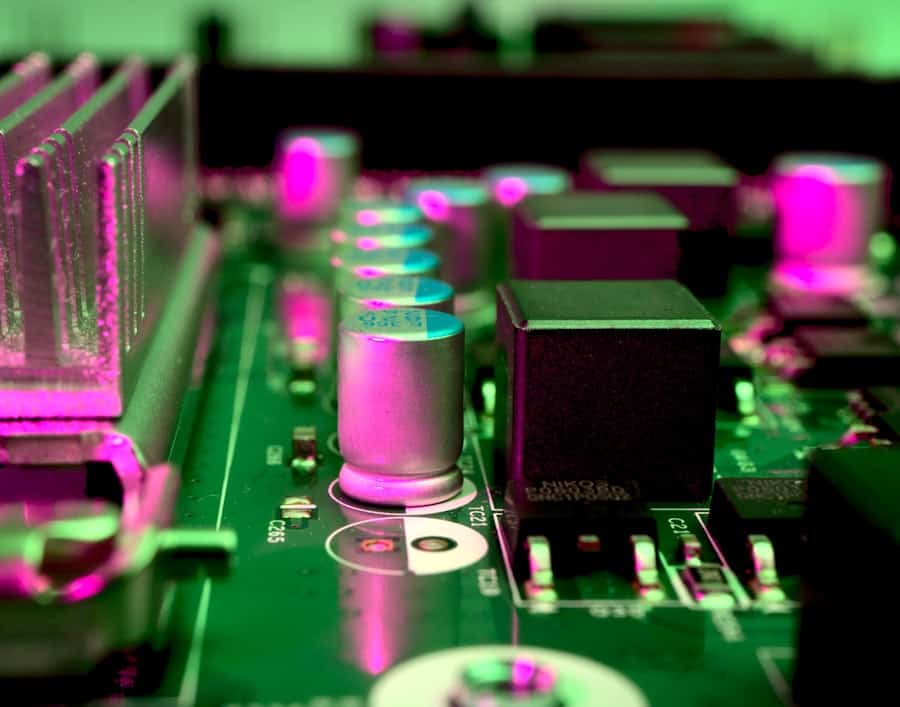The quest to explore Mars has captivated humanity for decades, igniting imaginations and inspiring scientific endeavors. As the fourth planet from the Sun, Mars presents a unique opportunity for exploration due to its similarities to Earth, including the presence of polar ice caps, seasonal weather patterns, and geological features that suggest a history of water. However, despite numerous missions and extensive research, vast regions of Mars remain uncharted and shrouded in mystery.
Mapping these unknown territories is crucial for future exploration, potential colonization, and understanding the planet’s past and present. The mapping of Mars is not merely an academic exercise; it has profound implications for our understanding of planetary science and astrobiology. By creating detailed maps of the Martian surface, scientists can identify areas of interest for future missions, such as locations that may harbor signs of past life or resources that could support human habitation.
The challenge lies in the sheer scale of the planet and the limitations of current mapping technologies. As we venture deeper into this endeavor, innovative solutions are required to overcome obstacles and unlock the secrets of Mars.
Key Takeaways
- Mapping unknown regions of Mars is crucial for understanding the planet’s geology, potential for life, and for future human exploration.
- Challenges of mapping Mars include limited data, complex terrain, and the vastness of the planet’s surface.
- AI is being used to analyze and interpret large amounts of data from Mars missions, helping to map the planet more efficiently and accurately.
- Advantages of using AI in mapping Mars include its ability to process large datasets, identify patterns, and make predictions, all of which are essential for mapping a planet like Mars.
- Machine learning plays a key role in mapping Mars by enabling AI systems to learn from data and improve their mapping capabilities over time.
The Challenges of Mapping Unknown Regions of Mars
Mapping Mars is fraught with challenges that stem from both the planet’s environment and the technological limitations of our current tools. One significant hurdle is the vastness of the Martian landscape, which spans approximately 144 million square kilometers. This immense area makes it difficult to achieve comprehensive coverage using traditional mapping techniques.
The uneven terrain, characterized by mountains, valleys, craters, and plains, further complicates the task. High-resolution imaging is essential for accurate mapping, yet capturing detailed images across such a large area requires advanced technology and significant time. Additionally, the harsh conditions on Mars pose another layer of difficulty.
The planet’s thin atmosphere, extreme temperatures, and dust storms can hinder the performance of spacecraft and rovers equipped with imaging instruments. For instance, dust accumulation on solar panels can reduce energy efficiency, limiting operational time and data collection capabilities.
These challenges necessitate innovative approaches to ensure that mapping efforts are both efficient and effective.
The Use of AI in Mapping Mars
Artificial Intelligence (AI) has emerged as a transformative force in various fields, including space exploration. In the context of mapping Mars, AI offers powerful tools that can enhance data processing, analysis, and interpretation. By leveraging machine learning algorithms and advanced computational techniques, researchers can analyze vast amounts of data collected from orbiters and rovers more efficiently than traditional methods allow.
AI can identify patterns in geological features, classify terrain types, and even predict potential areas of interest for further exploration. One notable application of AI in Martian mapping is its ability to process images captured by orbiters like NASA’s Mars Reconnaissance Orbiter (MRO). These images provide a wealth of information about the planet’s surface but require extensive analysis to extract meaningful insights.
AI algorithms can automate this process by recognizing features such as craters, valleys, and potential water sources with remarkable accuracy. This capability not only accelerates the mapping process but also reduces the likelihood of human error in data interpretation.
Advantages of Using AI in Mapping Mars
The integration of AI into Martian mapping efforts presents several advantages that enhance both efficiency and accuracy. One primary benefit is the ability to handle large datasets generated by various missions. For instance, the MRO has captured over 60 terabits of data since its launch in 2006.
Analyzing such a vast amount of information manually would be an insurmountable task; however, AI can sift through this data rapidly, identifying relevant features and anomalies that warrant further investigation. Moreover, AI can improve the precision of geological classifications on Mars. Traditional methods often rely on subjective interpretations by scientists, which can lead to inconsistencies in data categorization.
In contrast, AI algorithms can be trained on labeled datasets to recognize specific geological formations consistently. This objectivity enhances the reliability of maps produced through AI-driven analysis, providing a solid foundation for subsequent scientific research and exploration planning.
The Role of Machine Learning in Mapping Mars
Machine learning, a subset of AI, plays a pivotal role in enhancing our understanding of Martian geography. By employing algorithms that learn from data patterns, researchers can develop models that predict geological features based on existing datasets. For example, supervised learning techniques can be utilized to train models on previously mapped regions of Mars, allowing them to extrapolate information about uncharted areas based on similarities in terrain characteristics.
Additionally, unsupervised learning methods can uncover hidden patterns within large datasets without prior labeling. This capability is particularly valuable when exploring unknown regions where no existing maps or classifications exist. By clustering similar features together or identifying anomalies in the data, machine learning can reveal insights about Martian geology that may have otherwise gone unnoticed.
This approach not only aids in mapping but also contributes to our understanding of the planet’s geological history and evolution.
Examples of AI Technology Used in Mapping Mars
Several notable projects have successfully integrated AI technology into their Martian mapping efforts. One prominent example is NASA’s Jet Propulsion Laboratory (JPL), which has developed machine learning algorithms to analyze images from the MRO. These algorithms have been employed to identify potential landing sites for future missions by assessing factors such as slope stability and surface composition.
By automating this process, JPL has significantly reduced the time required to evaluate landing site candidates. Another example is the European Space Agency’s (ESA) Mars Express mission, which utilizes AI to analyze radar data collected from beneath the Martian surface. The MARSIS (Mars Advanced Radar for Subsurface and Ionosphere Sounding) instrument sends radar waves into the ground to detect subsurface structures.
AI algorithms process this data to identify potential water ice deposits or other geological features hidden beneath the surface. This capability not only aids in mapping but also informs scientists about the planet’s hydrological history.
Future Implications of AI in Mapping Mars
The future implications of AI in mapping Mars are vast and promising.
This evolution will enable scientists to create increasingly detailed maps that reveal intricate geological features and potential resources on Mars.
Such maps will be invaluable for planning future missions aimed at exploration or even colonization. Moreover, as we develop autonomous rovers equipped with AI capabilities, real-time mapping will become a reality. These rovers could analyze their surroundings as they traverse the Martian landscape, updating maps dynamically based on new findings.
This adaptability would allow for more efficient exploration strategies and enable scientists to respond quickly to unexpected discoveries or challenges encountered during missions.
The Potential of AI in Mapping Unknown Regions of Mars
The integration of AI into the mapping of unknown regions of Mars represents a significant leap forward in our quest to understand this enigmatic planet. By harnessing advanced algorithms and machine learning techniques, researchers can overcome many challenges associated with traditional mapping methods. The ability to process vast datasets quickly and accurately opens new avenues for exploration and discovery.
As we continue to push the boundaries of technology and innovation in space exploration, the potential for AI to revolutionize our understanding of Mars is immense. From identifying landing sites for future missions to uncovering hidden geological features beneath the surface, AI stands poised to play a crucial role in unraveling the mysteries of our neighboring planet. The journey to map Mars is far from over; with each advancement in AI technology, we move closer to unlocking its secrets and paving the way for future exploration endeavors.
If you are interested in exploring the world of technology beyond AI mapping on Mars, you may want to check out TheNextWeb Brings Insights to the World of Technology. This article provides valuable insights into the latest trends and developments in the tech industry, offering a broader perspective on the role of technology in our lives. Whether you are a beginner or an expert in the field, this article is sure to provide you with valuable information and inspiration.
FAQs
What is the role of AI in mapping unknown regions of Mars?
AI plays a crucial role in mapping unknown regions of Mars by analyzing large amounts of data from various sources such as satellite imagery, rovers, and orbiters. It can identify patterns, features, and potential hazards that may not be immediately apparent to human researchers.
How does AI help in identifying potential landing sites on Mars?
AI can analyze terrain, topography, and geological features to identify potential landing sites on Mars that are safe and scientifically interesting. It can also assess the risk factors and suitability for future human exploration missions.
What are the benefits of using AI for mapping Mars?
Using AI for mapping Mars allows for faster and more efficient analysis of data, leading to the discovery of new features and potential resources. It also helps in creating detailed and accurate maps that can aid in planning future missions and scientific research.
Can AI be used to navigate rovers on Mars?
Yes, AI can be used to navigate rovers on Mars by processing real-time data and making autonomous decisions based on the terrain and obstacles. This reduces the need for constant human intervention and allows for more efficient exploration.
How does AI contribute to the overall understanding of Mars?
AI contributes to the overall understanding of Mars by helping to create comprehensive maps, identifying potential areas of interest for scientific study, and assisting in the planning of future missions. It also aids in the analysis of geological and environmental data to better understand the planet’s history and potential for habitability.



